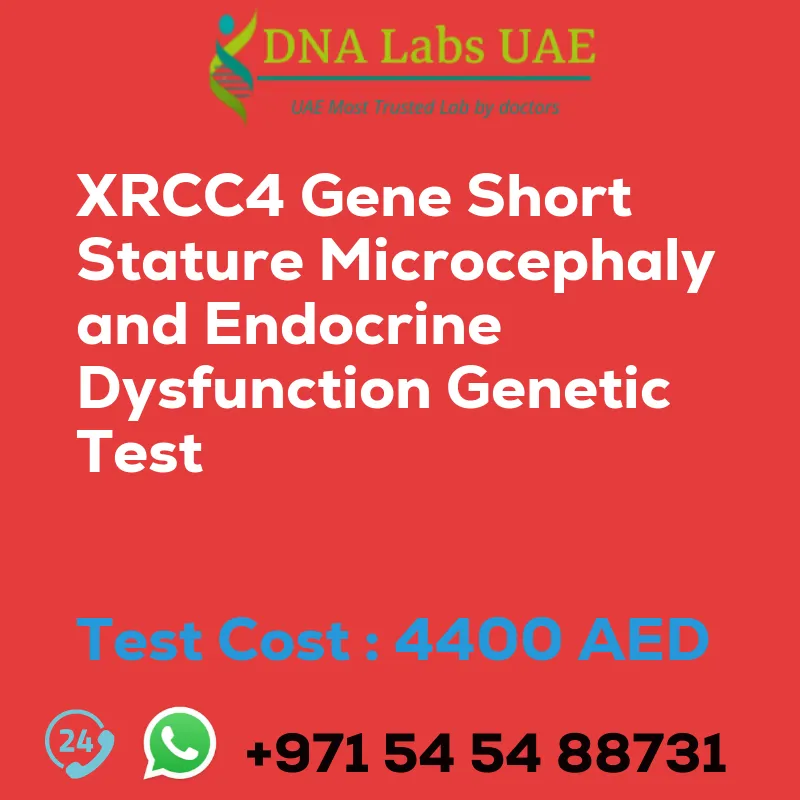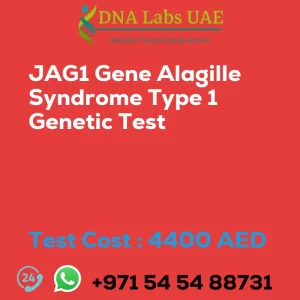XRCC4 Gene Short stature microcephaly and endocrine dysfunction Genetic Test
At DNA Labs UAE, we offer the XRCC4 Gene Short stature microcephaly and endocrine dysfunction Genetic Test for a cost of AED 4400.0. This test helps in diagnosing individuals with short stature, microcephaly, and endocrine dysfunction.
Test Components and Details
- Test Name: XRCC4 Gene Short stature microcephaly and endocrine dysfunction Genetic Test
- Price: AED 4400.0
- Sample Condition: Blood or Extracted DNA or One drop Blood on FTA Card
- Report Delivery: 3 to 4 Weeks
- Method: NGS Technology
- Test Type: Dysmorphology
- Doctor: Pediatrics
- Test Department: Genetics
Pre Test Information
Prior to the XRCC4 Gene Short stature microcephaly and endocrine dysfunction Genetic Test, it is important to provide the clinical history of the patient. Additionally, a genetic counseling session will be conducted to draw a pedigree chart of family members affected by this condition.
Test Details
The XRCC4 gene plays a crucial role in repairing DNA damage through non-homologous end joining. Mutations in this gene can result in short stature, microcephaly, and endocrine dysfunction. Short stature refers to being significantly shorter than average for one’s age and gender. Microcephaly is characterized by an abnormally small head size, leading to developmental delays and intellectual disability. Endocrine dysfunction involves abnormalities in hormone production and regulation.
NGS genetic testing, also known as Next-Generation Sequencing, is a technique used to analyze multiple genes simultaneously for mutations or variations. This allows for the identification of genetic changes associated with certain conditions or diseases. In the case of short stature, microcephaly, and endocrine dysfunction, NGS genetic testing can identify mutations in the XRCC4 gene that may be responsible for these symptoms.
By identifying specific mutations in the XRCC4 gene, NGS genetic testing aids in diagnosing individuals with this condition and provides information about the underlying genetic cause. This information is valuable for understanding the disease mechanism, predicting prognosis, and guiding treatment options or management strategies.
| Test Name | XRCC4 Gene Short stature microcephaly and endocrine dysfunction Genetic Test |
|---|---|
| Components | |
| Price | 4400.0 AED |
| Sample Condition | Blood or Extracted DNA or One drop Blood on FTA Card |
| Report Delivery | 3 to 4 Weeks |
| Method | NGS Technology |
| Test type | Dysmorphology |
| Doctor | Pediatrics |
| Test Department: | Genetics |
| Pre Test Information | Clinical History of Patient who is going for XRCC4 Gene Short stature, microcephaly, and endocrine dysfunction NGS Genetic DNA Test. A Genetic Counselling session to draw a pedigree chart of family members affected with XRCC4 Gene Short stature, microcephaly, and endocrine dysfunction NGS Genetic DNA Test gene XRCC4 |
| Test Details |
The XRCC4 gene is involved in the repair of DNA damage through a process called non-homologous end joining. Mutations in this gene can lead to a condition called short stature, microcephaly, and endocrine dysfunction. Short stature refers to a condition where individuals are significantly shorter than average for their age and gender. Microcephaly is a condition characterized by an abnormally small head size, which often results in developmental delays and intellectual disability. Endocrine dysfunction refers to abnormalities in the function of the endocrine system, which is responsible for producing and regulating hormones in the body. NGS (Next-Generation Sequencing) genetic testing is a technique used to analyze multiple genes simultaneously for mutations or variations. It allows for the identification of genetic changes that may be associated with certain conditions or diseases. In the case of short stature, microcephaly, and endocrine dysfunction, NGS genetic testing can be used to identify mutations in the XRCC4 gene that may be responsible for these symptoms. By identifying specific mutations in the XRCC4 gene, NGS genetic testing can help in diagnosing individuals with this condition and provide information about the underlying genetic cause. This information can be valuable for understanding the disease mechanism, predicting the prognosis, and potentially guiding treatment options or management strategies. |








